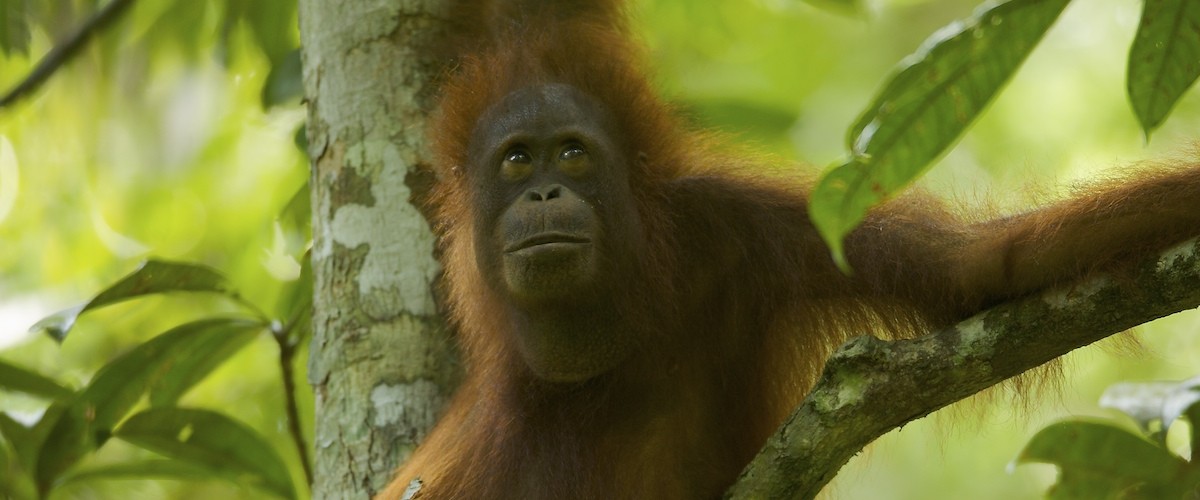By Widiya Octa Selfiany, Environmental Education and Conservation Awareness Manager
Our Environmental Education and Conservation Awareness program carried out an expedition, from May 17-21, in the Padu Banjar and Pulau Kumbang Customary Forests. Padu Banjar and Pulau Kumbang are villages located in Simpang Hilir District, Kayong Utara Regency, in West Kalimantan (Borneo).
The expedition was carried out for 5 days in the 2 villages in Simpang Hilir District. The Environmental Education team conducted community discussions and outreach about protected animals to 5 schools in Simpang Hilir District.
Community discussions were held at the Padu Banjar Village Office and at the Pulau Kumbang Multipurpose Building. We received positive responses from the community during discussions about community members’ concern for and knowledge about protected animals. We learned about an instance in Padu Banjar when three orangutans had entered the community garden area, where rubber crops are planted, and the Head of Padu Banjar village had hoped the orangutans could be rescued immediately. (A negative response in this scenario would be if community members had wanted to harm or kill the orangutans who were damaging their crops.)
The community also discussed the territorial boundaries between the protected forest area and the village forest area, which previously had no clear boundaries. Community members provided their input and decided that in order to best protect animals and the environment, they would install informational signs about protected animals along this boundary.

We also visited 5 schools in Simpang Hilir District during this expedition, namely SDN 25 Padu Banjar, SMP 05 Simpang Hilir, SDN 14 Pulau Kumbang, SDN 15 Pulau Kumbang and SMAN 02 Simpang Hilir. Our goal during the school visits was to provide information about protected animals. We held educational puppet shows for elementary school students, and lectures for junior high and high school students. To quantify this learning process, we carried out pre-activity tests and post-tests to measure knowledge gain. These included questions about the material we presented on the conservation of orangutans and other protected animals.


The teachers informed me that all of the students and teachers really appreciated the environmental education program we implemented. They also asked Yayasan Palung/GPOCP to provide additional modules/lessons that could be used in classrooms, especially to supplement learning materials on topics related to environmental science.
Overall, this expedition was a great success. I am excited to continue working in my new position at Yayasan Palung!






